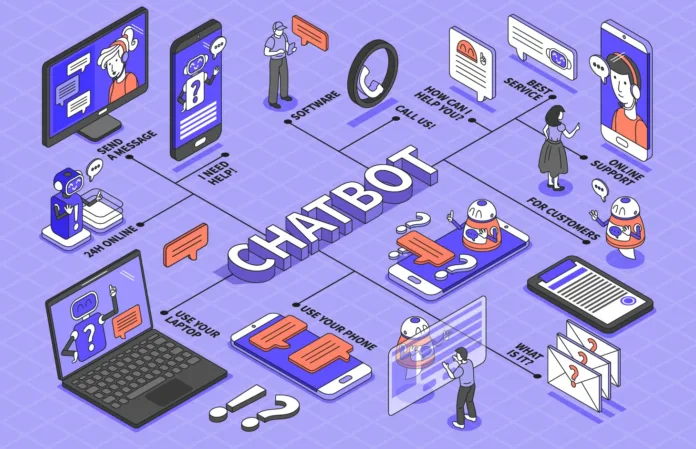
In today’s hyper-connected world, chatbots and virtual assistants are revolutionizing the way businesses interact with their customers. These AI-driven tools offer round-the-clock support, streamline communication, and enhance the overall customer experience. With automation becoming a key strategy for companies, integrating chatbots and virtual assistants is no longer optional—it’s a necessity.
From resolving basic queries to offering personalized assistance, these intelligent systems are shaping a new standard for customer service. As artificial intelligence continues to evolve, businesses that adopt these technologies early will enjoy a competitive edge, improved customer satisfaction, and operational efficiency.
The Rise of AI in Customer Support
Chatbots and virtual assistants are software applications powered by artificial intelligence (AI) and natural language processing (NLP) that simulate human conversation. They allow businesses to automate routine interactions, providing faster response times and reducing the workload on human agents.
These technologies are widely deployed across websites, messaging apps, and voice-enabled platforms. Whether answering FAQs or helping customers track orders, their capabilities are expanding rapidly with advances in machine learning.
How Chatbots and Virtual Assistants Enhance Customer Experience
1. 24/7 Availability
One of the biggest advantages of deploying chatbots and virtual assistants is their ability to provide 24/7 customer support. Unlike human agents, they don’t need breaks or sleep, making them ideal for businesses with a global customer base.
2. Instant Responses
Today’s consumers expect immediate answers. Chatbots can respond within seconds, reducing customer wait time significantly. This not only improves user satisfaction but also boosts the chances of conversion.
3. Personalized Interactions
Advanced virtual assistants use customer data to provide personalized recommendations, product suggestions, and tailored responses. This creates a more engaging and relevant user experience.
4. Cost Efficiency
By automating routine tasks such as order tracking, password resets, and FAQs, companies can reduce operational costs. Human agents can then focus on more complex issues that require empathy and critical thinking.
5. Omnichannel Integration
Modern virtual assistants can function across various channels including websites, social media platforms, messaging apps, and even voice-activated devices. This seamless omnichannel experience helps businesses stay connected with customers wherever they are.
Real-World Applications Across Industries
E-commerce: Chatbots assist shoppers with product search, order updates, and returns, improving the overall buying experience.
Banking & Finance: Virtual assistants help customers check balances, make payments, or even get financial advice through secure channels.
Healthcare: Patients can book appointments, get reminders, or ask health-related questions through medical AI chatbots.
Travel & Hospitality: From itinerary updates to hotel check-ins, these assistants streamline the customer journey.
Education: Institutions use chatbots to provide course information, track progress, and support remote learning.
Challenges and Considerations
While the benefits are substantial, implementing chatbots and virtual assistants also comes with challenges:
Language and understanding limitations: Not all bots understand complex queries or emotional tones.
Security and privacy concerns: Handling customer data responsibly is essential to maintain trust.
Lack of human touch: Some customers still prefer speaking to real people, especially for sensitive issues.
Businesses must balance automation with human support to offer the best customer service experience.
The Future of AI-Driven Customer Service
As AI continues to mature, future virtual assistants will become more emotionally intelligent, understanding tone, sentiment, and context with higher accuracy. With integration of technologies like voice recognition, augmented reality (AR), and predictive analytics, the scope of these tools will grow even further.
Soon, virtual assistants will not only answer queries but also predict customer needs, take proactive actions, and drive personalized marketing strategies. The companies that embrace these advancements early on will be better positioned to lead in customer engagement and retention.
Conclusion
Chatbots and virtual assistants are no longer futuristic concepts—they are essential tools for modern business success. By improving response time, personalizing interactions, and operating around the clock, they dramatically elevate the customer experience. As technology evolves, so will their capabilities, making them indispensable for any customer-centric business.